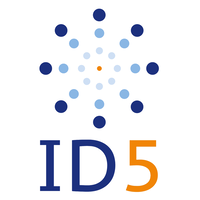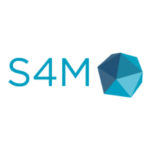ID5 Publishes The State of Digital Identity; Triton Digital Integrates a2x with TouchPoint DSP and AdPerform DSP
by Mathew Broughton on 24th May 2019 in News


In this weekly segment, ExchangeWire sums up key industry updates on ad tech from around the European region – in this edition: ID5 publishes The State of Digital Identity; Triton Digital integrates a2x with TouchPoint DSP and AdPerform DSP; Prebid.org adopts The Trade Desk's unified ID solution in header bidding wrapper; Tremor Video DSP expands premium supply formats with outstream and digital out-of-home video; and S4M launches new Multi-Store DCO ad format based on user’s live location.
ID5 publishes The State of Digital Identity, the first research on identity for the digital advertising industry
ID5, the independent universal ID solution for digital advertising, has released The State of Digital Identity, the first industry report on the topic of user identification for advertising.
The report finds that identity is more important than ever for digital advertising: 89% of all respondents said they consider digital user identification a priority for their businesses. Programmatic professionals recognise that Google, Facebook and Amazon are the only players who can identify users efficiently and 95% of respondents consider this capability a big competitive advantage for the walled gardens.
The market realises that current identification methodologies based on cookie matching are inefficient, with 91% of survey respondents saying that the industry needs to find a better solution to identify users. The survey finds that cookie synchronisation is the cause of many concerns for publishers: 60% of them have experienced difficulties due to low match rates when implementing PMPs or Deals. 93% of brands, agencies and media owners agree that it’s important to increase match rates with their technology partners but they lack control and visibility over the problem: 40% of brands and 43% of publishers don’t know their match rates with their partners.
Speaking exclusively to ExchangeWire, Mathieu Roche, CEO of ID5 said: “User identification is a hot topic in ad tech, but we wanted to go beyond the buzz and understand the real perception, and concerns, of the industry. ID5 surveyed over 90 professionals and used the responses to create this State of Digital Identity report which is really the first research focused on the topic of identity for digital advertising.”
“This report shows that the industry has finally realised the importance of user identification and the necessity to make it work better to compete with the walled gardens, whose dominance is based on their ability to identify users efficiently and at scale. It is exciting to see that the ad tech industry is moving in that direction with the support and adoption of shared ID solutions. Third-party cookie-based identifiers don't work well enough and won't be available much longer in browsers anyway, so we need to build the future identity framework for digital advertising. This report gives us insights on how this effort is shaping up.”
Triton Digital Integrates the a2x Programmatic Marketplace with dataxu’s TouchPoint DSP and audio CC’s AdPerform DSP

Triton Digital, the global technology and services provider to the digital audio and podcast industry, announced today the integration of its programmatic audio advertising marketplace, a2x, with the TouchPoint DSP by dataxu, a leading software provider for marketing professionals. The integration provides dataxu’s customers with the ability to add online audio from premiere broadcasters, podcasters, and streaming music services around the world to their omnichannel programmatic buys through private marketplace (PMP) deals.
"We are pleased to be integrated with dataxu, and look forward to providing dataxu’s buyers with the ability to leverage unparalleled flexibility and enhanced targetability to reach their target audiences wherever they may be listening, including desktop computers, mobile phones, smart speakers, and more." Benjamin Masse, managing director, market development and strategy at Triton Digital told ExchangeWire.
This week the firm also announced the integration of a2x with audio CC’s AdPerform DSP. The integration enables audio CC’s buyers to execute targeted, non-skippable, brand safe audio ad buys through both open marketplace and private marketplace deals.
Prebid.org adopts The Trade Desk's unified ID solution in header bidding wrapper

Prebid.org announced on 23rd May 2019 that they have incorporated The Trade Desk’s unified ID solution into their open-source toolkit as an optional module that any publisher can activate at their discretion. Prebid.org is an industry-wide initiative supported by a diverse group of exchanges, publishers, and third-party developers, dedicated to creating standardised solutions for programmatic advertising. The unified ID solution allows for increased coverage, more relevant advertising and faster load times, which benefit all parties from advertisers to consumers.
Adoption of the free unified ID solution allows all parties across the supply chain (SSPs, DSPs, DMPs and data providers) to utilise The Trade Desk’s cookie footprint to increase their own cookie coverage across the global independent internet. Any current user of the Prebid platform can update their code and begin to receive the unified ID solution in their program.
Joel Livesey, Director of Partnerships EMEA, told ExchangeWire: "The roll out of our Unified ID solution has been a really important project for us, and the wider advertising industry. With the sheer number of companies that exist in our ecosystem today, efficiently and thoroughly matching the multitude of different IDs is simply not possible, which is why we’ve created a common currency for anonymous cookie IDs that is available to all for free.
"By narrowing the number of cookie syncs necessary, we’re helping brands engage with the right audiences at scale on the open web, which is where people spend most of their time. As match rates increase and fewer cookies are fired, the process of buying advertising will become significantly more efficient, thus reducing wastage and ensuring brands get more bang of their marketing buck. And importantly, publishers’ pages will load faster, so they and the end users are benefiting not only from better, more relevant advertising experiences, but also from their overall experience online being faster and more efficient – a more positive outcome for all.
"As we continue to rally together to adopt shared cookie footprints, we’ll make the advertising ecosystem across the independent internet competitive with the walled gardens’ ID approach. Prebid.org’s incorporation of our solution into its header bidding wrapper is an exciting, and critical, step towards making this happen."
Tremor Video DSP expands premium supply formats with outstream and digital out-of-home video

Tremor Video DSP, a leading programmatic video platform, announced the expansion of the company’s premium supply formats with outstream and digital out-of-home (DOOH) video. The new offerings were developed in order to meet the increased demand from video advertisers looking to grow their reach in highly engaging environments.
"The less-intrusive nature of these ads, along with their expanded reach and contextual relevance, makes them far more valuable for brands and advertisers," said Jay Baum, Head of Global Partnerships, Tremor Video DSP. "Having your video viewed in premium environments enables further engagement with consumers who are more likely to be receptive to your brand." Research indicates that people view outstream video ads for 25 percent longer than instream.
The offering allows brands and advertisers to place their video ads within premium editorial content across a variety of publisher sites and platforms. There are three main outstream inventory types—in-article, in-feed and slider—which can now be leveraged by Tremor Video DSP clients to better engage consumers and can be optimised based on a campaign’s desired KPIs.
S4M launches new Multi-Store DCO ad format based on user’s live location

S4M, a leading drive-to-store platform, announced on May 22nd the release of a brand-new ad format, the Multi-Store DCO. The new format provides advertisers with the ability to display multiple store locations based on the consumer’s real-time physical proximity.
The format combines branded product content with a Dynamic Creative Optimisation (DCO) feature, which helps consumers identify the closest range of retailers that carry the featured product. This functional ad format provides advertisers with the opportunity to raise awareness of their product and the stores where it is available, providing practical assistance for product purchase. In addition, the format can help promote a selection of brand-owned stores.
The stores displayed within the ad are ranked depending on the user's real-time proximity, with the closest store appearing first. In a second step, shoppers can click on the store that best suits their needs (direction of travel, closeness...), which initiates directions to open directly within the user’s map application.
The advantage of the Multi-Store DCO is twofold for advertisers. They can raise awareness of their products as well as promote a localised selection of brand-owned stores at the same time. With this new ad format, brands . now have a smart way of delivering the hyper-localised interactions consumers crave.








Follow ExchangeWire